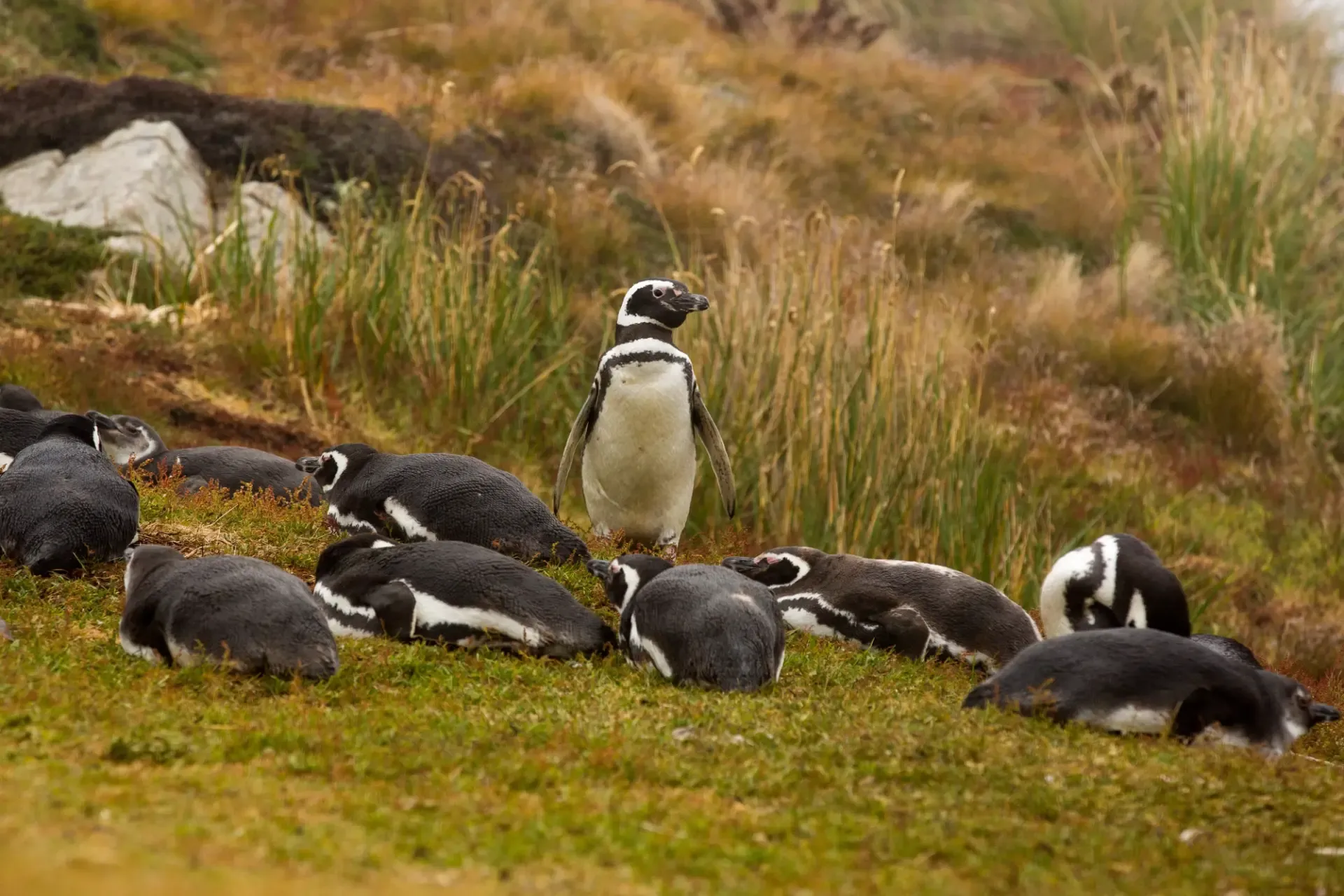The Birds You’re Likely To See Cruising Around The Falkland Islands
Around 230 species of bird have been recorded on the Falkland Islands including two endemic species. The penguins are undoubtably the star attraction, with as many as million nesting on the islands every summer. On a Falkland Island cruise, keen ornithologists are not only likely to spot several penguin species but many other rare and fascinating bird species.
Visit the Falkland Islands on an expedition cruise in the Antarctic with Swan Hellenic. Our Antarctica In depth: Antarctica, South Georgia & Falklands itinerary allows plenty of opportunities to meet the birds of the Falkland Islands for yourself.
Penguins
Five of the world’s seventeen penguin species live on the Falkland Islands. Volunteer Beach on East Falkland has one of the northernmost colonies of king penguins in the world. You’ll find tiny Southern rockhopper penguins on the cliffs of Pebble and Sea Lion Islands. Watch these crested, charismatic birds hop effortlessly up steep cliffs with both feet together. The distinctive black and white Magellanic penguins arrive in summer for breeding season and the inquisitive gentoo penguin is also prolific here. Similar in looks and behaviour to their rockhopper cousins, macaroni penguins are a rarer sight, with only a few dozen breeding pairs living on the islands.
Striated caracara
Known locally as the ‘Johnny Rook’, the striated caracara is a striking chocolate brown coloured bird of prey with a big personality. They are listed as ‘Near Threatened’, with only 500 breeding pairs left on the Falkland Islands. In the 19th century, sheep farmers began to regard the striated caracara as a threat to their livestock. The resulting persecution of the birds contributed to a significant drop in their numbers. Regarded as one of the most intelligent birds of prey, they are prone to stealing unsupervised possessions from tourists, so keep one eye on your belongings if you spot one of these magnificent birds.
Black-bowed albatross
The Falkland Islands are home to 70 per cent of the world’s population of black-browed albatross. With a generous wingspan of up to two-and-a-half meters, the black-browed albatross is particularly striking with its black lined wings and eyes. The birds arrive in the Falkland Islands in September to breed, leaving again at the end of April. Returning to the same solid pillar nest every year, the female lays a single white egg in early October, with successful chicks fledging in April.
Southern giant petrels
The southern giant petrel is also known by the unfortunate moniker ‘stinker’. This comes from their tendency to spit the contents of their stomachs at potential predators. The 10,000 pairs on the island prefer to breed in colonies on open coastal slopes, returning to the same colony each year. Most breeding sites are around the south of the Falkland Sound and to the west of West Falkland. The largest colony is on Sandy Cay, in the Elephant Cays Group. There are a few who prefer spending their time around populated areas like Stanley, the capital of the Falkland Islands.
Steamer duck
Known locally as the ‘logger duck’, the steamer duck is large and striking with a grey body and orange beak and feet. The endemic flightless steamer duck has very small wings and, as its name suggests, it cannot fly. The almost identical steamer duck can fly but prefers not to. Confusingly, the two breeds look almost identical and occupy similar habitats. The steamer duck is the most prolific of duck species on the islands, with over 300,000 breeding pairs.
Cobb’s wren
Also endemic to the Falkland Islands, this small brown bird is difficult to ignore. The wren emits a harsh, explosive, and loud call, a mix of trills and whistles, when excited. They are very tame little birds and will sit in the grass tussocks on the beach, watching residents and tourists go about their business. The wrens breed between October and December, laying 3-4 double brooded eggs in a grass ball nest located in a tussac or sheltered below rocks.
